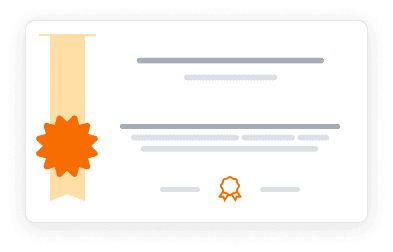This course is part of Engenharia com Arduino: Programação, Eletrônica e Automação.
This course cannot be purchased separately - to access the complete learning experience, graded assignments, and earn certificates, you'll need to enroll in the full Engineering with Arduino: Programming, Electronics and Automation Systems Professional Certificate program. You can audit this specific course for free to explore the content, which includes access to course materials and lectures. This allows you to learn at your own pace without any financial commitment.
Portuguese
Portuguese
What you'll learn
Gain a solid understanding of Arduino programming and the Arduino IDE
Master fundamental electronics concepts including voltage, current, and resistance
Explore various sensors including temperature, humidity, motion, and light sensors
Learn to connect and configure sensors to communicate with Arduino boards
Develop skills in data visualization through displays and serial communication
Apply knowledge to practical projects like weather stations and home automation
Skills you'll gain
This course includes:
72 Hours PreRecorded video
Graded assignments and exams
Access on Mobile, Tablet, Desktop
Limited Access access
Shareable certificate
Closed caption
Get a Completion Certificate
Share your certificate with prospective employers and your professional network on LinkedIn.
Created by
Provided by

Top companies offer this course to their employees
Top companies provide this course to enhance their employees' skills, ensuring they excel in handling complex projects and drive organizational success.





There are 8 modules in this course
This comprehensive Arduino course focuses on mastering sensor technology and its applications. Students will gain a solid foundation in Arduino programming and essential electronics concepts, with emphasis on connecting and configuring various sensors. The curriculum covers temperature, humidity, motion, and light sensors among others, teaching students how to effectively interface these devices with Arduino microcontrollers. Through hands-on projects, participants learn data visualization techniques, troubleshooting skills, and real-world applications such as weather stations, home automation, and security systems. The course bridges theoretical knowledge with practical implementation, preparing students to create innovative projects that leverage sensor technology to solve real-world problems in our increasingly connected world.
Arduino Fundamentals
Module 1
Essential Electronics
Module 2
Types of Sensors
Module 3
Sensor Interconnection
Module 4
Data Visualization
Module 5
Projetos Práticos
Module 6
Resolução de Problemas
Module 7
Aplicações do Mundo Real
Module 8
Fee Structure
Individual course purchase is not available - to enroll in this course with a certificate, you need to purchase the complete Professional Certificate Course. For enrollment and detailed fee structure, visit the following: Engenharia com Arduino: Programação, Eletrônica e Automação
Payment options
Financial Aid
Testimonials
Testimonials and success stories are a testament to the quality of this program and its impact on your career and learning journey. Be the first to help others make an informed decision by sharing your review of the course.
Frequently asked questions
Below are some of the most commonly asked questions about this course. We aim to provide clear and concise answers to help you better understand the course content, structure, and any other relevant information. If you have any additional questions or if your question is not listed here, please don't hesitate to reach out to our support team for further assistance.

